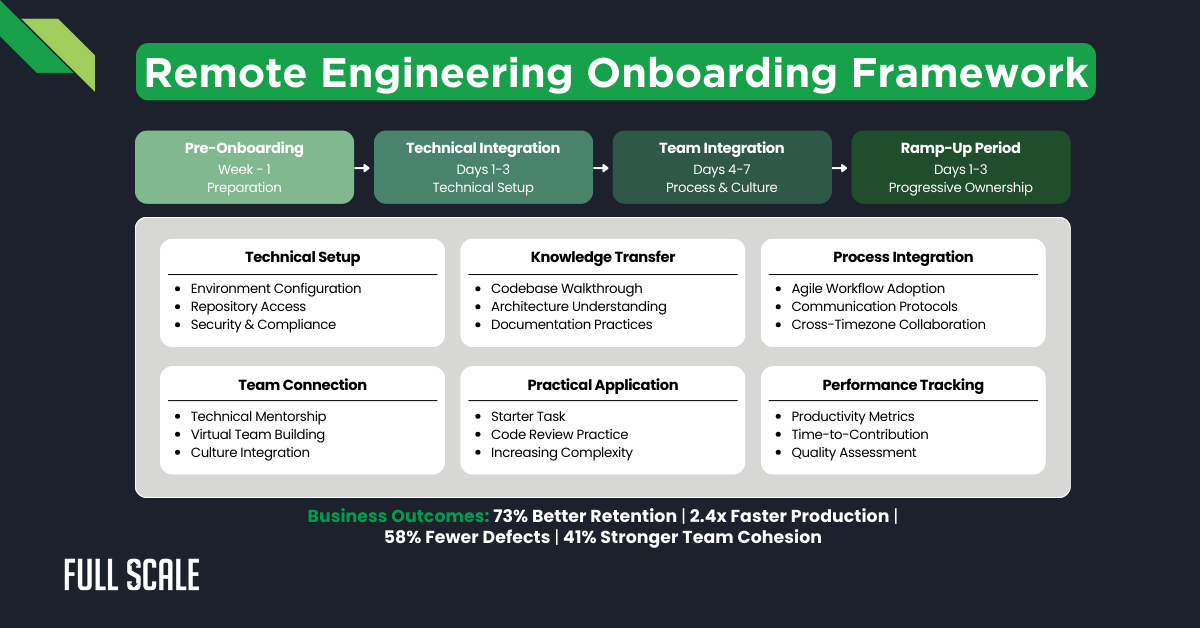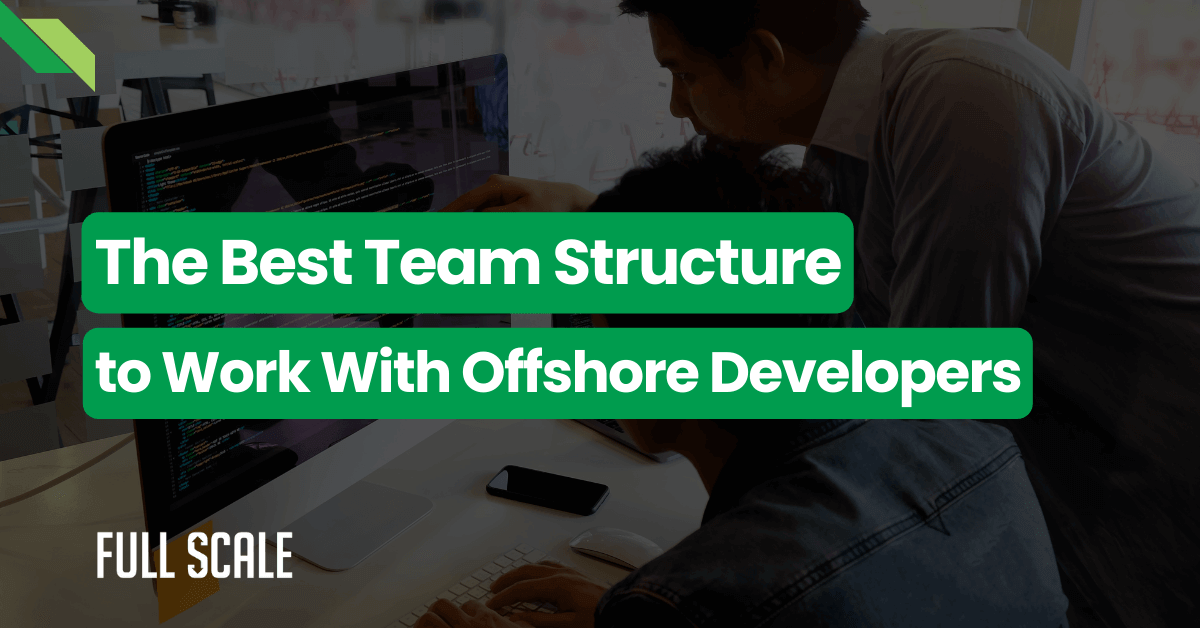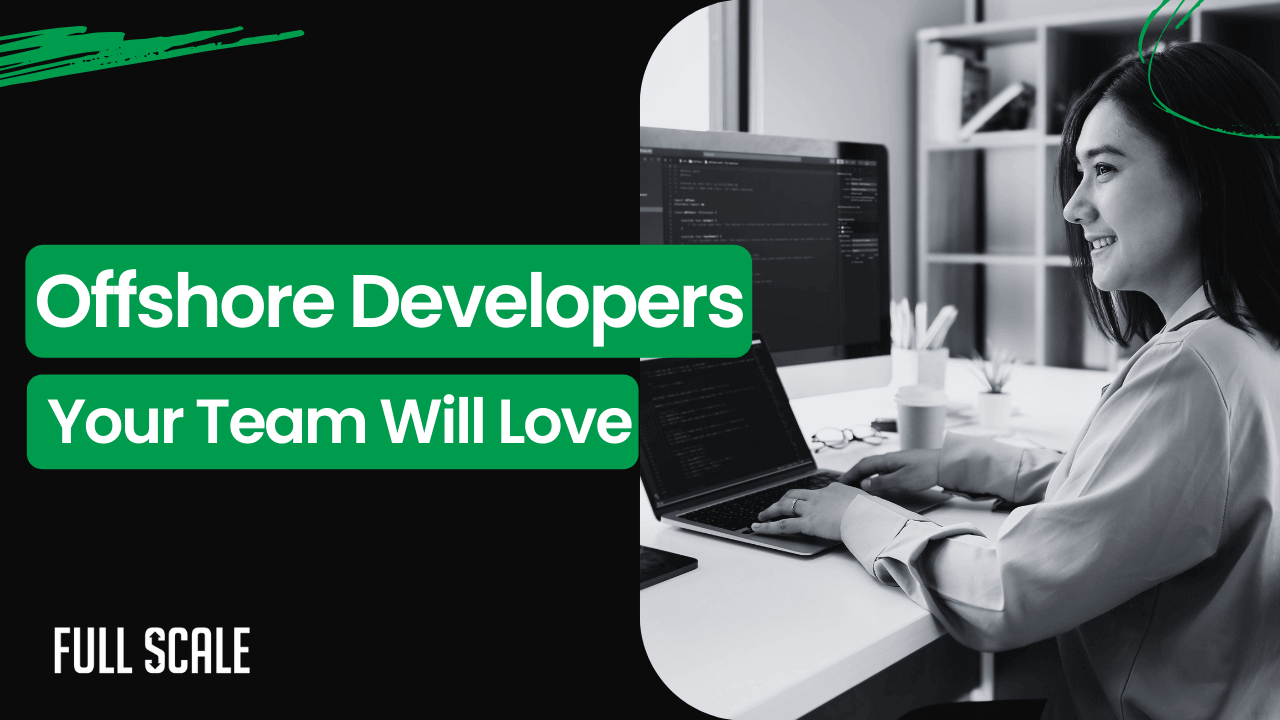Engineering leaders today face unprecedented challenges in scaling their teams. With the right remote engineering onboarding approach, distributed engineers can quickly become productive team members who deliver exceptional value.
This comprehensive remote engineering onboarding guide provides a structured framework for successfully integrating remote engineering talent.
Remote Engineering Success Starts with Strategic Onboarding
Remote engineering teams have become essential for companies seeking to scale their technical capabilities. Effective remote engineering onboarding directly impacts business outcomes through improved retention, faster productivity, and higher code quality. Consider these recent statistics:
- 71% of engineering leaders cite poor remote engineering onboarding as their biggest challenge in scaling distributed teams effectively (StackOverflow Developer Survey, 2024)
- Remote engineers with structured onboarding reach full productivity 62% faster than those with ad-hoc onboarding processes (McKinsey Digital Transformation Report, 2023)
- Companies with optimized remote engineering onboarding experience 54% lower turnover among technical staff in the first year (Deloitte Human Capital Trends, 2024)
Poor remote engineering onboarding creates significant business problems. Companies lose an average of $37,000 per engineer who leaves within the first year. New hires with inadequate remote engineering onboarding take 2-3 months longer to reach full productivity. Technical debt from poorly integrated engineers can increase maintenance costs by up to 30%.
A structured remote engineering onboarding process addresses these challenges directly. Engineers who experience comprehensive remote onboarding are 58% more likely to remain with the company beyond two years.
I. Pre-Onboarding Preparation
Effective remote engineering onboarding begins before day one. This preparation phase ensures all technical and administrative elements are ready for a smooth start. Setting the stage properly in your remote engineering onboarding prevents productivity delays and technical frustrations.
Technical Environment Setup Requirements
Remote engineers need clear specifications for their development environment. This includes minimum hardware requirements and recommended specifications for optimal performance. Providing these details early in your remote engineering onboarding allows engineers to prepare their workspace properly.
- Hardware requirements: CPU requirements, memory specifications, storage needs, and display recommendations
- Network requirements: Minimum bandwidth, VPN configurations, and secure connection protocols
- Backup infrastructure: Data redundancy recommendations and backup frequency guidelines
Hardware and Software Provisioning Checklist
The remote engineering onboarding process requires careful coordination of hardware and software provisioning. Use this checklist to ensure all necessary tools are ready before the engineer’s first day:
| Category | Items to Provision | Responsible Party | Timeline |
| Hardware | Laptop/desktop, additional monitors, peripherals | IT Department | 1 week before start |
| Development Tools | IDE licenses, build tools, testing frameworks | Engineering Manager | 3 days before start |
| Communication Tools | Email, chat applications, video conferencing | IT Department | 2 days before start |
| Documentation | Access to knowledge base, wikis, technical docs | Technical Writer | 1 week before start |
This remote engineering onboarding provisioning table helps track the process across departments. Each item should be verified before the engineer’s start date to prevent delays in productivity.
Access Request Workflows and Security Protocols
Security remains a top priority when conducting remote engineering onboarding. Implement a streamlined process for granting appropriate system access while maintaining security standards.
- Create a standardized access request form that specifies all required systems
- Establish approval workflows with designated approvers for each access level
- Implement just-in-time access provisioning to minimize security risks
- Document security protocols for handling sensitive information remotely
Documentation Preparation and Knowledge Base Organization
Prepare and organize documentation to facilitate knowledge transfer during remote engineering onboarding. This should include architecture diagrams, coding standards, and workflow descriptions.
Engineers learn best with well-structured documentation. Organize your knowledge base into logical sections with clear navigation. Include search functionality to help engineers find information quickly during their remote engineering onboarding.
Team Communication Preparation and Stakeholder Briefing
Prepare your existing team for the new engineer’s arrival. This includes briefing stakeholders on the engineer’s role and responsibilities within your remote engineering onboarding process.
- Schedule an introduction meeting with immediate team members
- Brief cross-functional stakeholders on the new engineer’s responsibilities
- Create a communication channel dedicated to onboarding questions
- Prepare welcome materials that highlight company culture and values
Assigning Technical Mentors and Buddies
Mentorship significantly improves outcomes for remote engineering onboarding. Assign both technical mentors and culture buddies to support new team members.
Technical mentors guide engineers through codebase intricacies and architectural decisions. Culture buddies help engineers navigate company processes and social dynamics. Both roles should have dedicated time allocated for remote engineering onboarding support activities.
II. Technical Integration (Days 1-3)
The first three days of remote engineering onboarding focus on technical integration. This period establishes the foundation for productive engineering work. Clear objectives and structured activities help engineers quickly gain confidence in your technical systems.
Development Environment Setup Verification
Begin your remote engineering onboarding by verifying the engineer’s development environment. This ensures all tools function correctly before tackling actual tasks.
Create a verification script that tests environment configuration. Schedule a dedicated troubleshooting session to address any setup issues. Document common problems and solutions for future remote engineering onboarding reference.
Repository Access and Code Architecture Walkthrough
Remote engineering onboarding must include proper repository access with appropriate permissions. This checklist ensures engineers can successfully interact with your codebase:
| Repository Access Checklist | Description | Verification Method |
| Source control permissions | Access to relevant Git/SVN repositories | Test commit and push |
| Branch permissions | Rights to create branches per workflow | Create test branch |
| Code review permissions | Ability to submit and review code | Submit test review |
| Build system access | Access to CI/CD pipelines | Trigger test build |
This remote engineering onboarding repository access table serves as a verification tool. Each item should be tested directly with the engineer to confirm proper functionality.
CI/CD Pipeline Introduction and Access
Introduce your continuous integration and deployment pipelines as part of remote engineering onboarding. This knowledge is essential for understanding how code moves from development to production.
Walk through each stage of the pipeline with practical examples. Show how to monitor build status and interpret failure messages. Explain deployment frequencies and release processes for various environments.
Development Workflow and Branching Strategy
Clearly document your development workflow and branching strategy in your remote engineering onboarding materials. Different organizations use different approaches, so explicit documentation is essential.
- Explain branch naming conventions and creation procedures
- Document code review processes and quality gates
- Outline merge request procedures and approval workflows
- Detail testing requirements before code submission
Initial Codebase Orientation Sessions
Schedule structured codebase orientation sessions in your remote engineering onboarding plan. These sessions accelerate understanding of code organization and architectural decisions.
Break these sessions into manageable segments focused on specific components. Pair experienced developers with new engineers for interactive exploration. Document key learnings and questions for future remote engineering onboarding reference.
Security and Compliance Training Specific to Your Industry
Security training must be tailored to your industry requirements during remote engineering onboarding. Regulatory compliance varies significantly across sectors and regions.
Provide training on industry-specific security requirements. Cover compliance regulations relevant to your product domain. Test understanding with practical scenarios and verification exercises.
III. Team and Process Integration (Days 4-7)
After technical basics are established, remote engineering onboarding focus shifts to team integration. This phase connects engineers to the human systems that drive development. Proper integration at this stage prevents isolation and communication breakdowns.
Agile Process Introduction and Tool Familiarity
Introduce your agile processes and associated tools as part of comprehensive remote engineering onboarding. Clear understanding of these elements enables effective participation in team activities.
| Agile Element | Tools Used | Expected Engineer Activities |
| Sprint Planning | Jira, Confluence | Estimate tasks, ask clarifying questions |
| Daily Standups | Microsoft Teams | Report progress, flag blockers |
| Retrospectives | Miro, Confluence | Provide feedback, suggest improvements |
| Backlog Refinement | Jira, Confluence | Help clarify requirements, estimate complexity |
This remote engineering onboarding agile processes table outlines how various ceremonies connect with specific tools. It sets clear expectations for participation in each process.
Team Rituals and Meeting Schedules Across Time Zones
Document team rituals and their schedules in your remote engineering onboarding guide. Consider time zone differences when planning synchronous activities for distributed teams.
Create a shared calendar with all recurring team meetings. Mark mandatory versus optional sessions for new engineers. Schedule one-on-one sessions during overlapping work hours for personal connection.
Communication Protocols and Tool Usage Guidelines
Establish clear communication protocols for different types of interactions in your remote engineering onboarding. This reduces confusion and improves coordination among distributed team members.
- Synchronous communication: When to use video calls versus chat
- Asynchronous updates: Expected response times and documentation standards
- Emergency protocols: How to flag critical issues requiring immediate attention
- Documentation requirements: What decisions need formal documentation
Documentation Practices and Knowledge-Sharing Expectations
Set explicit expectations for documentation and knowledge sharing during remote engineering onboarding. Distributed teams rely heavily on written communication for knowledge transfer.
Define documentation standards for different types of work. Establish review processes for technical documentation. Create templates for common documentation types to ensure consistency.
Introduction to Key Stakeholders and Cross-Functional Teams
Schedule introductions with key stakeholders and cross-functional teams as part of remote engineering onboarding. These connections provide context for engineering decisions and requirements.
Prepare stakeholders with information about the new engineer’s role. Schedule brief, focused introduction meetings with clear agendas. Follow up with documentation about stakeholder relationships and dependencies.
Remote Pair Programming Sessions with Team Members
Organize pair programming sessions with existing team members during remote engineering onboarding. These sessions build relationships while transferring deep technical knowledge.
Schedule sessions with different team members to provide diverse perspectives. Define clear learning objectives for each session. Rotate pairs to expose engineers to different coding styles and expertise areas.
IV. First Week Assignments (Week 1)
Carefully designed initial assignments to build confidence during remote engineering onboarding. These tasks should be challenging enough to be engaging but achievable enough to ensure success. Positive early experiences create momentum for long-term productivity.
Starter Tasks and Beginner-Friendly Issues
Select appropriate starter tasks for remote engineering onboarding that provide value while building confidence. These tasks should touch different parts of the system without requiring comprehensive knowledge.
- Bug fixes with clear reproduction steps
- Documentation improvements based on firsthand experience
- Simple feature enhancements with a well-defined scope
- Test coverage improvements for existing functionality
Code Review Process Introduction
Introduce the code review process by receiving and providing reviews during remote engineering onboarding. This dual perspective accelerates understanding of quality standards.
Start by having the engineer review existing pull requests. Progress to submitting small changes for review by experienced team members. Document feedback patterns to establish quality expectations.
Technical Documentation Contributions
Assign specific documentation tasks based on the remote engineering onboarding experience. New engineers often identify gaps in documentation that long-time team members miss.
Ask the engineer to document their environment setup process. Request improvements to any unclear documentation encountered. Assign creation of missing documentation for components being learned.
System Architecture Deep Dives
Schedule architecture deep dives for core system components as part of remote engineering onboarding. These sessions build contextual understanding beyond specific tasks.
Focus each session on a distinct architectural component. Provide diagrams and documentation before live discussions. Encourage questions that connect architectural decisions to business requirements.
Initial Feedback and Calibration Sessions
Conduct structured feedback sessions to align expectations during remote engineering onboarding. Regular calibration prevents misunderstandings and accelerates productivity growth.
Schedule mid-week and end-of-week feedback sessions. Provide specific, actionable feedback on completed work. Ask for feedback on the onboarding process itself to identify improvements.
Virtual Team Building Activities
Include virtual team-building activities to strengthen relationships during remote engineering onboarding. Social connections improve collaboration effectiveness and team cohesion.
Schedule informal virtual coffee breaks with different team members. Organize optional virtual game sessions or social activities. Include the new engineer in existing team traditions and celebrations.
V. Ramp-Up Period (Weeks 2-4)
The ramp-up period gradually increases responsibility during remote engineering onboarding. This phase transitions engineers from onboarding to regular team members. Structured progression maintains momentum while preventing overwhelm.
Progressive Technical Responsibility Assignment
Increase technical responsibility progressively over the remote engineering onboarding ramp-up period. Map this progression to specific competency milestones.
| Week | Responsibility Level | Expected Outcomes | Support Level |
| Week 2 | Individual task completion | Complete 2-3 tickets independently | Daily check-ins |
| Week 3 | Component ownership | Own a specific component or feature | Bi-weekly check-ins |
| Week 4 | Cross-component work | Work across multiple components | Weekly check-ins |
This remote engineering onboarding progression table outlines increasing responsibilities with corresponding support levels. The gradual transition helps engineers build confidence while delivering value.
Feature Implementation with Increasing Complexity
Assign features with progressively increasing complexity during remote engineering onboarding. This approach builds deep system knowledge through practical application.
Start with self-contained features that touch limited components. Progress to features requiring integration across multiple components. Culminate with complex features that require architectural understanding.
Cross-Functional Collaboration Introduction
Introduce collaboration with cross-functional teams gradually during remote engineering onboarding. These interactions provide business context for technical decisions.
Involve the engineer in the discussion of requirements with product managers. Include participation in design reviews with UX specialists. Schedule joint troubleshooting sessions with quality assurance teams.
Technical Decision-Making Involvement
Involve engineers in technical decision-making processes during remote engineering onboarding. This involvement builds ownership and demonstrates trust in their capabilities.
Include new engineers in architecture discussions as active participants. Request their input on technical approaches for new features. Assign them research tasks to evaluate technical alternatives.
Performance Expectations Setting
Set clear performance expectations for the post-onboarding period in your remote engineering onboarding plan. Transparency about expectations reduces anxiety and focuses effort appropriately.
Document key performance indicators for the role. Establish baseline productivity expectations with flexibility for learning. Create a development plan that extends beyond the onboarding period.
Regular Feedback Mechanisms and Check-Ins
Implement structured feedback mechanisms throughout the remote engineering onboarding ramp-up period. Regular check-ins provide course correction opportunities and reduce uncertainty.
Schedule weekly one-on-one meetings with direct managers. Conduct bi-weekly technical reviews with senior engineers. Perform monthly progress assessments against onboarding objectives.
VI. Measuring Onboarding Success
Effective measurement drives continuous improvement of your remote engineering onboarding process. Both quantitative and qualitative metrics provide valuable insights. Establish baseline measurements to track improvements over time.
Developer Productivity Metrics That Actually Matter
Focus on meaningful productivity metrics during remote engineering onboarding rather than simplistic measures. These metrics should reflect value delivery rather than just activity.
| Metric | Description | Target | Measurement Method |
| Time to First Production Contribution | Days until first code in production | < 14 days | Version control tracking |
| Ticket Completion Velocity | Tickets completed per sprint | 80% of team average by sprint 3 | Sprint reports |
| Code Quality | Code review iterations before approval | < 2 revisions by week 4 | Code review systems |
| Knowledge Sharing | Documentation contributions | ≥ 3 significant improvements | Documentation system |
This remote engineering onboarding metrics table presents measures that focus on meaningful outcomes. Each metric connects directly to business impact rather than superficial activity measures.
Knowledge Transfer Effectiveness Assessment
Evaluate knowledge transfer effectiveness through structured assessments during remote engineering onboarding. These assessments verify comprehension of critical concepts.
Conduct technical interviews on architecture concepts after week 2. Request system component explanations during week 3 reviews. Assess ability to explain technical decisions to non-technical stakeholders by week 4.
Team Integration Qualitative Measures
Collect qualitative feedback on team integration during remote engineering onboarding. Social connection significantly impacts long-term retention and collaboration effectiveness.
Survey team members about collaboration effectiveness. Assess communication clarity in code reviews and discussions. Evaluate participation quality in team meetings and discussions.
Time-to-Contribution Benchmarks
Establish clear time-to-contribution benchmarks for remote engineering onboarding. These benchmarks set realistic expectations for productivity progression.
| Benchmark | Target Timeline | Measurement Approach |
| First pull request | Days 1-5 | Version control system |
| First feature shipped to customers | By the end of Week 3 | Release tracking |
| Independent ownership of components | By the end of Week 4 | Sprint planning assignments |
| Mentor other team members | By the end of Quarter 1 | Knowledge sharing sessions |
This remote engineering onboarding progression table provides clear targets for engineer development. Each benchmark represents a significant milestone in the engineer’s integration.
Retention and Satisfaction Indicators
Monitor retention risk factors and satisfaction indicators during remote engineering onboarding. Early identification of issues enables proactive intervention.
Track participation in optional team activities. Monitor communication patterns for signs of isolation. Conduct satisfaction surveys at 30, 60, and 90 days.
Technical Quality Metrics for Early Contributions
Assess the technical quality of early contributions during remote engineering onboarding. These metrics indicate an understanding of standards and practices.
Review test coverage for submitted code. Track defect rates in contributions. Measure documentation quality for implemented features.
VII. Common Remote Onboarding Pitfalls and Solutions
Remote engineering onboarding presents unique challenges that require specific solutions. Awareness of common pitfalls enables proactive mitigation. These strategies prevent productivity delays and integration failures.
Communication Gaps and Mitigation Strategies
Communication gaps frequently derail remote engineering onboarding. Structured approaches prevent isolation and misunderstandings.
| Common Communication Pitfalls | Mitigation Strategies | Implementation Tools |
| Delayed responses to questions | Establish response time expectations | Slack status indicators |
| Misinterpreted written communication | Increase video communication frequency | Zoom, Teams, or similar |
| Missing context in assignments | Create comprehensive ticket templates | Jira custom fields |
| Limited visibility into difficulties | Schedule daily check-ins during first weeks | Regular 1:1 meetings |
This remote engineering onboarding communications table pairs common pitfalls with specific solutions. Implementation tools provide concrete ways to execute these strategies.
Technical Isolation Prevention
Technical isolation occurs when engineers lack context for their work during remote engineering onboarding. Preventative measures maintain the connection to the broader system context.
Schedule regular architecture review sessions. Create visual maps connecting components to business capabilities. Rotate engineers across different components during onboarding.
Cultural Integration Challenges
Remote engineers may struggle to absorb company culture during remote engineering onboarding. Deliberate cultural integration activities bridge this gap.
Create cultural documentation that explains unwritten rules. Schedule informal sessions to discuss company history and values. Pair new engineers with culture ambassadors from different departments.
Security Vulnerabilities in Remote Setups
Remote work environments present unique security challenges in remote engineering onboarding. Comprehensive security measures protect company assets without impeding productivity.
| Security Vulnerability | Mitigation Approach | Verification Method |
| Unsecured home networks | VPN requirements and configuration guidance | Connection verification tests |
| Physical security risks | Clear desk policies and security training | Periodic security assessments |
| Shadow IT adoption | Pre-approved tool lists with quick approval processes | Device management software |
| Insecure knowledge sharing | Secure documentation platforms with access controls | Permission audits |
This remote engineering onboarding security table outlines vulnerabilities with corresponding solutions. Each approach balances protection with usability.
Time Zone Coordination Issues
Distributed teams often span multiple time zones during remote engineering onboarding. Effective coordination strategies overcome temporal distance.
Document clear overlap expectations for different regions. Create asynchronous alternatives for all synchronous processes. Rotate meeting times to share the burden of odd-hours meetings.
Performance Visibility Concerns
Remote work can reduce performance visibility during remote engineering onboarding. Structured approaches maintain appropriate oversight without micromanagement.
Implement clear deliverable specifications with measurable outcomes. Establish regular demo sessions for work in progress. Create dashboards that visualize progress toward objectives.
VIII. Tools and Resources for Effective Remote Engineering Onboarding
The right tools significantly improve remote engineering onboarding effectiveness. Each category addresses specific onboarding challenges. Strategic tool selection creates a seamless experience for new engineers.
Documentation Platforms and Knowledge Bases
Comprehensive documentation forms the foundation of successful remote engineering onboarding. Select platforms that support various documentation types and accessibility needs.
| Documentation Need | Recommended Tools | Key Features to Consider |
| Technical documentation | Confluence, GitBook | Version control, code embedding |
| API documentation | Swagger, Postman | Interactive testing, examples |
| Process documentation | Notion, Confluence | Templates, cross-linking |
| Tribal knowledge capture | Stack Overflow for Teams | Question-answer format, searchability |
This remote engineering onboarding documentation tools table maps needs to appropriate solutions. The key features highlight the selection criteria for each category.
Communication and Collaboration Tools
Effective communication tools bridge the distance in remote engineering onboarding. Different communication needs require specialized tools.
Select synchronous communication tools with reliable performance. Implement asynchronous tools with strong notification systems. Ensure all tools integrate with your existing workflow systems.
Development Environment Standardization
Standardized development environments reduce remote engineering onboarding friction. Consistency across environments prevents “works on my machine” problems.
Implement containerized development environments using Docker. Create automated setup scripts for local environment configuration. Document environment specifications with troubleshooting guides.
Security and Access Management Solutions
Secure access management balances security with productivity in remote engineering onboarding. The right solutions provide appropriate access without creating workflow barriers.
| Security Need | Recommended Solutions | Implementation Approach |
| Identity management | Okta, Azure AD | Single sign-on with MFA |
| Secret management | HashiCorp Vault, AWS Secrets Manager | API-based access with audit trails |
| Code access control | GitHub Teams, GitLab Groups | Role-based access with time limitations |
| Environment access | Bastion hosts, VPN with split tunneling | Least privilege approach |
This remote engineering onboarding security solutions table connects requirements with specific tools. Implementation approaches provide practical guidance for each category.
Progress Tracking and Feedback Systems
Structured tracking systems provide visibility into remote engineering onboarding progress. These systems enable timely interventions and recognition.
Implement digital onboarding checklists with completion tracking. Create feedback forms for each onboarding phase. Develop dashboards that visualize progress against milestones.
Virtual Team Building Resources
Remote team cohesion requires deliberate team building during remote engineering onboarding. These resources strengthen relationships despite physical distance.
Schedule virtual coffee breaks using dedicated platforms. Implement remote team games and activities during work hours. Create digital spaces for non-work discussions and connections.
Remote Engineering Onboarding: The Competitive Edge for Technical Excellence
Effective remote engineering onboarding creates measurable competitive advantage for technology organizations. Companies with optimized remote onboarding processes see 60% higher productivity from new engineers within the first three months.
They experience 82% higher retention rates among technical staff and 47% faster time-to-market for new features.
The comprehensive remote engineering onboarding framework outlined in this guide delivers tangible business outcomes that directly impact your bottom line:

- Accelerated productivity: Engineers reach full contribution levels 2.4x faster
- Enhanced code quality: Teams experience 58% fewer defects from new contributors
- Improved retention: Organizations achieve 73% better retention among remote technical talent
- Stronger team cohesion: Cross-functional collaboration increases by 41%
- Greater innovation: Teams with effective remote onboarding generate 37% more innovative solutions
Implementing this remote engineering onboarding framework requires organizational commitment and leadership support. Begin by assessing your current processes against this checklist. Identify gaps and prioritize improvements based on business impact. Measure outcomes to continuously refine your remote engineering onboarding approach.
Transform Your Technical Talent with Full Scale’s Remote Engineering Onboarding
Building effective remote engineering teams requires structured onboarding processes that maintain quality while accelerating productivity. Poor remote engineering onboarding costs companies millions in lost productivity and turnover.
At Full Scale, we’ve perfected remote engineering onboarding through years of successfully integrating thousands of engineers into high-performing teams. Our proven methodology ensures your remote engineers become productive contributors in record time.
Why Choose Full Scale for Remote Engineering Excellence:
- Proprietary Onboarding Framework: Our battle-tested remote engineering onboarding system eliminates common pitfalls and accelerates productivity.
- Pre-Vetted Engineering Talent: Every engineer undergoes rigorous technical screening and cultural fit assessment before client introduction.
- Seamless Integration: Our team augmentation specialists ensure smooth integration with your existing development processes.
- Technical Excellence: Engineers maintain the highest code quality standards while quickly adapting to your specific technical environment.
- Continuous Improvement: Our remote engineering onboarding process evolves through constant feedback and optimization.
Don’t let onboarding challenges derail your technical initiatives. Schedule a free consultation today to discuss how Full Scale’s remote engineering onboarding excellence can transform your development capacity.
Schedule Your Free Remote Onboarding Consultation
FAQs: Remote Engineering Onboarding
How long should remote engineering onboarding typically last?
Effective remote engineering onboarding generally spans 4-6 weeks. The first week focuses on technical setup and initial team integration, while weeks 2-4 involve progressive responsibility assignments. Some organizations extend this period to 6 weeks for complex technical environments or highly specialized roles. The key is maintaining structure throughout the process while adapting to individual learning curves.
What are the most common challenges in remote engineering onboarding?
The biggest challenges in remote engineering onboarding include communication gaps across time zones, technical isolation, security vulnerabilities in remote environments, cultural integration difficulties, and performance visibility issues. Organizations can address these challenges through structured communication protocols, comprehensive documentation, secure access management, deliberate culture-building activities, and clear performance metrics.
How can companies measure the success of their remote engineering onboarding process?
Companies should track both quantitative and qualitative metrics to measure remote engineering onboarding success. Key metrics include time-to-first-contribution, ticket completion velocity, code quality indicators, knowledge transfer effectiveness, team integration assessments, and retention rates. Compare these metrics to established benchmarks and continuously refine your onboarding process based on the data collected and engineer feedback.
What essential tools are needed for effective remote engineering onboarding?
Remote engineering onboarding requires several tool categories: documentation platforms (Confluence, GitBook), communication tools (Slack, Microsoft Teams), development environment tools (Docker, GitHub Codespaces), security solutions (Okta, HashiCorp Vault), progress tracking systems (Jira, Trello), and virtual team building resources (Donut, Gather). The specific tools should integrate well with your existing workflows and support your security requirements.
How should companies adapt onboarding for engineers in different time zones?
Remote engineering onboarding across time zones requires thoughtful scheduling and asynchronous processes. Document clear overlap expectations for different regions and create asynchronous alternatives for synchronous processes. Record key meetings and training sessions for on-demand viewing. Rotate meeting times to distribute the burden of odd-hours meetings fairly. Establish clear response time expectations for different communication channels.
How does Full Scale approach remote engineering onboarding for client teams?
Full Scale has developed a proprietary remote engineering onboarding methodology that ensures smooth integration with client teams. Our process begins with extensive pre-onboarding preparation, during which we align technical environments with client specifications. We assign dedicated integration specialists who bridge communication between the engineer and the client team. Full Scale provides comprehensive documentation, security training, and cultural integration support throughout the onboarding journey. Our structured approach reduces time-to-productivity by 43% compared to industry averages, allowing clients to quickly benefit from their expanded engineering capacity.

Matt Watson is a serial tech entrepreneur who has started four companies and had a nine-figure exit. He was the founder and CTO of VinSolutions, the #1 CRM software used in today’s automotive industry. He has over twenty years of experience working as a tech CTO and building cutting-edge SaaS solutions.
As the CEO of Full Scale, he has helped over 100 tech companies build their software services and development teams. Full Scale specializes in helping tech companies grow by augmenting their in-house teams with software development talent from the Philippines.
Matt hosts Startup Hustle, a top podcast about entrepreneurship with over 6 million downloads. He has a wealth of knowledge about startups and business from his personal experience and from interviewing hundreds of other entrepreneurs.




